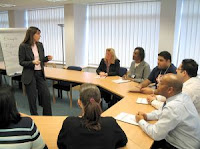 Do you think you are lucky—or unlucky? Your luck lies in whether you believe you are or not. You have to believe in luck to see it, and to realize it.
Do you think you are lucky—or unlucky? Your luck lies in whether you believe you are or not. You have to believe in luck to see it, and to realize it.
Richard Branson says: “Yes, of course, we are all lucky. If you live in a free society, you are lucky. Luck surrounds us every day; we are constantly having lucky things happen to us, whether you recognize it or not. I have not been any more lucky or unlucky than anyone else. The difference is when luck came my way, I took advantage of it.”
“I have not been any more lucky or unlucky than anyone else. The difference is when luck came my way, I took advantage of it.” —Richard Branson
Wow, this is straight from Sir Richard Branson.
The old adage we hear too often, “Luck is when opportunity meets preparation,” isn’t enough. I think there are two other critical components to “getting lucky.”
The (Complete) Formula for Getting Lucky: Preparation (personal growth) + Attitude(belief/mindset) + Opportunity (luck) + Action (doing something about it) = Getting Lucky
Preparation: You must constantly improve and prepare yourself—improve your skills, knowledge, expertise, relationships and resources—so that when luck strikes, you have the wherewithal to take advantage of it.
Attitude: This is where luck evades most people. As Sir Richard says, lucky things happen to all of us all the time, but that isn’t true unless you orient yourself to see situations, conversations and circumstances as fortuitous. As with most things in life, it begins with a mindset or an attitude. You cannot see what you don’t look for, and you cannot look for what you don’t believe in.
Opportunity: You can make your own luck, but the luck we are discussing here is those things you don’t plan for, or happened even better, faster or differently than expected. In this stage of the formula, it’s best not to force luck. Just let what happens happen, what shows up show up… let luck come to you. And it will—it does every day.
Action: This is your part of the deal. With the universe, God, the Lucky Charms leprechaun, whomever or whatever you associate delivering the luck just presented to you, it is now your job to act on it. This is what will separate the Richard Bransons from the Joseph Wallingtons. Who is Joseph Wallington? Exactly, you’ve never heard of him. That’s because he didn’t do anything about all the equally lucky things that happened to him.
What is the luckiest thing that has ever happened to you? What part of the formula will you focus on so you can get luckier?



